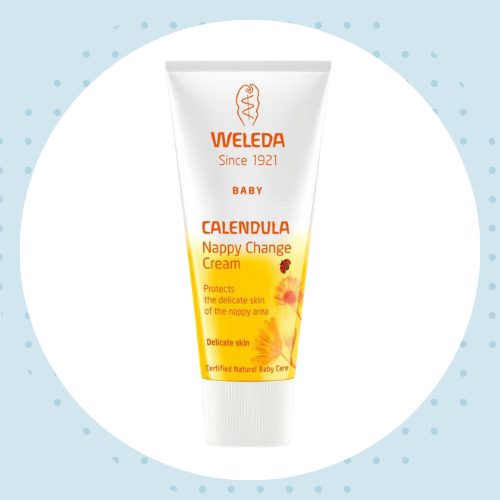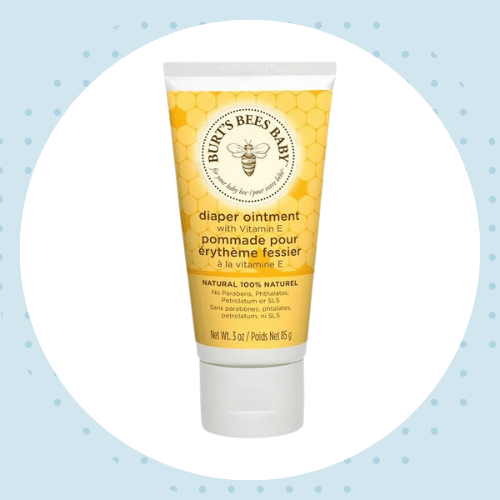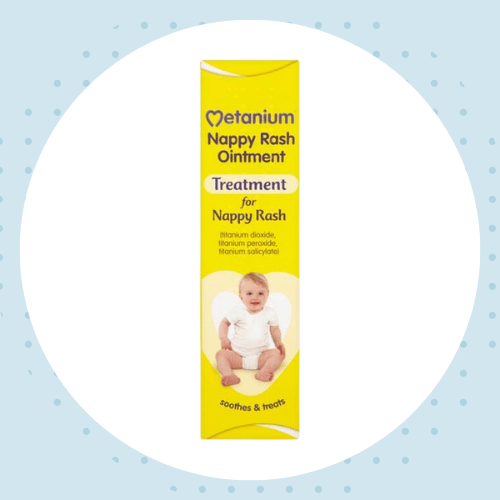9 of the best nappy rash creams for babies 2025
WHAT IS NAPPY RASH?
If there are red, sore-looking areas on your baby’s bottom, it’s likely to be nappy rash. Sometimes spots or blisters can also be seen and in particularly bad cases the skin may be broken. It’s very common and if treated will only last a few days. If it persists for more than three days and is severe, it could be a fungal or bacterial nappy rash and requires a trip to your GP.
What causes it?
It’s usually caused by a wet or dirty nappy irritating a baby’s skin but soap, bubble bath, body wash detergents and alcohol-based or fragranced baby wipes may also be responsible. A baby’s skin is around 30% thinner than an adult’s so is much more prone to sensitivity.
How do you prevent nappy rash?
Nappy rash can be prevented by changing nappies regularly or having some nappy-free time. You can also apply a nappy rash cream to act as a barrier against moisture in the nappy.
How do you treat nappy rash?
Here are some ways to treat nappy rash:
Nappy-free time.
Changing nappies very regularly.
Using a nappy rash cream which is designed to soothe the skin.
Cleaning the baby with sensitive skin wipes or with cotton wool and water.
Avoiding fragranced soap, body wash, bubble bath or talcum powder.
WHAT ARE THE DIFFERENT TYPES OF NAPPY CREAM?
There are three main types:
Preventative barrier creams: These form a film to protect the baby from any moisture in the nappy.
Treatment creams: These contain ingredients to soothe and treat nappy rash.
Barrier and treatment creams: These can both protect from and treat nappy rash.
If you are using a treatment cream and a separate barrier cream, wait a few minutes before applying the second one.
You can also choose between natural creams and ones that contain mineral oils like petrolatum and paraffin oil.
What are the alternatives to nappy cream?
You could try coconut oil for treating nappy rash or a few drops of expressed breast milk. Some use a petroleum jelly like Vaseline as both a barrier and treatment.
HOW DO YOU USE NAPPY CREAM?
Apply a thin layer to completely dry skin just before putting a new nappy on. It should be a thin layer as if you use too much it may transfer to the nappy and clog up the moisture-absorbing properties. It’s usually just put on the baby’s bottom but some also apply it to the groin creases.
Do you put nappy cream on every time you change a baby?
If your baby already has a rash, it’s best to apply a thin layer of treatment cream at each nappy change. If you want to prevent it, a barrier cream applied at every baby change will help this. But whether you do this may just depend on how sensitive your baby’s skin is.
Can you use nappy cream with reusable nappies?
Yes, but you might want to do so with a nappy liner so that it doesn’t come into contact with the cloth as it can be difficult to wash out and affect the absorbency. A natural nappy cream like the Weleda one will help prevent this from happening.
WHAT ARE THE BEST NAPPY RASH CREAMS?
This list has been narrowed down to the very best with thorough research and the following considered:
Consumer reviews
Best-seller lists
Recommendations from industry experts
Award-winning products
Personal experience and the products loved by other parents.
The list is updated annually. It was last updated on 29 November, 2024.
If you buy through a link, we may earn a small affiliate commission. 5% of profits are donated to UK Baby Banks to help parents in need of essentials.
1. weleda calendula nappy change cream
100% natural treatment and barrier cream in a tube.
The skin is soothed by almond oil, chamomile and organic calendula, which is anti-inflammatory.
Lanolin and zinc oxide form a protective barrier.
Suitable for vegetarians but not vegans because of the presence of lanolin and beeswax.
2. Bepanthen nappy rash ointment
A barrier cream which also contains Pro-Vitamin B5 to moisturise the skin and help it recover from any soreness.
Clinically proven, non-sticky and fragrance-free.
Comes in a tube.
Contains paraffin oil, lanolin, petrolatum and almond oil.
3. Childs farm nappy cream
Fragrance-free and dermatologically approved barrier cream for sensitive and eczema-prone skin.
Contains aloe vera, cocoa butter and shea butter to moisturise and protect.
It has a thinner consistency than most other nappy creams.
Vegan and cruelty-free.
Made in the UK.
4. Sudocrem antiseptic healing cream
This has been around since 1931.
It’s an antibacterial barrier cream that can also soothe sore skin.
It can also be used for eczema, surface wounds, sunburn, minor burns, acne, bed sores and chilblains.
Clinically proven to help heal a baby’s skin.
It contains benzyl alcohol, which is an antiseptic and also acts as a mild local anaesthetic to relieve any nappy rash pain.
Also contains lanolin and zinc oxide.
5. Aveeno baby soothing relief emollient cream
An emollient baby cream, which can also be used to prevent and treat nappy rash.
Made with natural colloidal oatmeal, it is clinically proven to moisturise skin for 24 hours.
Also contains petrolatum, benzyl alcohol and shea butter.
pH balanced and unscented.
Suitable for babies prone to eczema.
The tube is made with 50% recycled plastic and is 100% recyclable.
6. Green People Organic Nappy Cream
A barrier and treatment balm with 88.6% organic ingredients.
With zinc oxide, calendula, hemp seed oil, sunflower oil and chamomile oil.
Recyclable sugar cane plastic packaging. It can be recycled along with your usual kerbside recycling.
Suitable for vegans and certified cruelty-free.
7. My Expert Midwife No Harm Bum Balm
An award-winning barrier and treatment balm.
99.9% natural ingredients.
Contains the highest medical-grade lanolin, calendula, coconut oil, sweet almond oil and sunflower oil.
The balm softens and protects and is suitable for delicate and newborn skin.
It comes in a hygienic pump bottle.
Cruelty-free.
Recyclable packaging
Made in the U.K.
8. Burt’s bees baby diaper ointment
100% natural ointment which protects and soothes.
Contains 40% zinc oxide as well as sweet almond oil, shea butter, lavender oil and jojoba seed oil.
Paediatrician tested.
Certified cruelty-free.
9. Metanium nappy rash ointment
A very popular treatment for nappy rash that soothes and treats sore bottoms.
It’s suitable from birth.
Free from fragrance and lanolin.
Suitable for vegans.
FROM THE BLOG:
MORE OF THE BEST:
Changing tables • changing mats • nappy bins • reusable nappies • disposable nappies • coconut oil • baby thermometers • baby lotions
















Around 20% of babies will suffer from colic, which is characterised by excessive crying. Mine was one of them. Somewhat unbelievably, the exact cause is unknown but there are many remedies you can try. My research uncovered 22 of them. Here is a review of each and the science (if any) behind them.